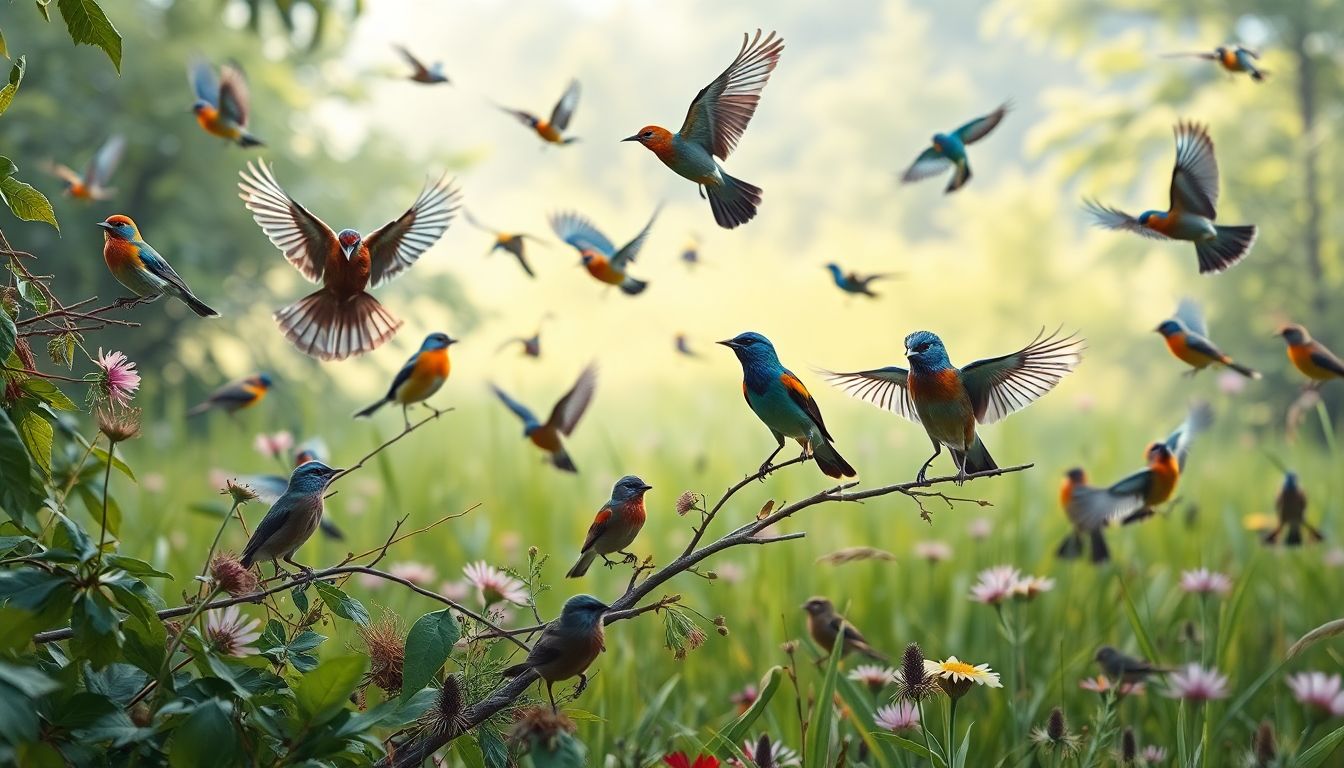
Bird watching, also called birding, is a loved hobby. People all over the world enjoy it. It lets you connect with nature. You also get to see the beautiful life of birds. You can enjoy this hobby anywhere, anytime of the year.
This guide gives you the knowledge and skills you need to start. You'll learn how to identify birds. You will also learn about equipment and good birding spots.
Getting Started with Bird Watching
Bird watching is simply observing birds in their natural habitat. It's an easy and fun hobby to get into. Being outside watching birds is good for your mind and body. It can lower stress and make you more aware of nature. If you're interested in learning more, check out organizations like the Audubon Society. They offer resources and events for birders.
Why Bird Watching?
Bird watching has many benefits. It lowers stress. Being outside is relaxing. It makes you more aware of the natural world. You also get the joy of discovering new birds. Spotting a rare bird is exciting!
Essential Bird Watching Etiquette
It's important to respect birds and where they live. Do not bother nesting sites. Don't use bird call recordings too much. These can stress birds out. Keep your impact on the environment small. Leave no trace behind.
Essential Equipment for Bird Watching
You don't need a lot of fancy gear to start. It is better to invest in a few quality items. Good binoculars are key. A helpful field guide is also important. Brands like Nikon and Vortex make great binoculars. The Cornell Lab of Ornithology is a good place to learn about birding equipment.
Binoculars: Your Most Important Tool
Good binoculars are a must for bird watching. Choose the right magnification and lens size. 8x42 binoculars are a good starting point. Consider the field of view. This determines how much you see. Models like the Vortex Diamondback are popular with beginners.
Field Guides: Identifying Your Finds
Field guides help you identify birds. There are different types. Some have regional focus. Some use photos. Others use illustrations. A Sibley Guide to Birds is a great choice. Peterson Field Guides are also good. Choose one for your area.
Optional Gear: Enhancing Your Experience
Other gear can make birding even better. Spotting scopes let you see birds far away. Tripods keep your scope steady. Notebooks help you record what you see. Cameras capture bird photos. Bird watching apps on your phone can help with identification too.
Mastering Basic Bird Identification
Identifying birds takes practice. Learn to observe key features. Pay attention to size, shape, and color. Notice how the bird acts. Where it lives is also a clue. These things will help you figure out what you are seeing.
Size and Shape: The First Clues
First, think about how big the bird is. Is it smaller than a sparrow? Or bigger than a crow? Look at the bird's shape. Is it long and slender? Is it round and stout? How does it stand? Is it upright or hunched over?
Plumage: Color Patterns and Markings
Look closely at the bird's feathers. What colors are they? What patterns do you see? Are there stripes on the wings? Does it have a ring around its eye? Are there spots on its chest? These markings can help you identify the bird.
Behavior and Habitat: Putting It All Together
Watch how the bird acts. How does it feed? How does it fly? Where does it like to perch? Think about where you see the bird. Is it in a forest, a field, or a wetland? All these things help you identify the bird.
Finding the Best Bird Watching Spots
Good bird watching spots have different habitats. They also change with the seasons. Spring and fall are great for seeing migrating birds.
Local Parks and Nature Reserves
Explore parks and nature reserves near you. Find out what birds have been seen there. Learn about the different habitats. Websites and local birding groups can help.
Migratory Hotspots
Migratory hotspots are great for seeing many birds. These are places where birds stop during their migration. Look for migration maps online. These show when birds will be passing through.
Bird Watching Tips and Techniques
Be patient and observant. The more you practice, the better you will become. Learning bird songs will also improve your skills.
Practice Makes Perfect: Sharpening Your Skills
Go bird watching often. The more you watch, the better you get. Take notes on what you see. Study your field guide. Listen to bird songs.
Joining a Bird Watching Community
Join a local bird watching club. Talk to other birders. Share what you've learned. You can learn a lot from others. Online forums are also good.
Conclusion
Bird watching is a great hobby. It connects you with nature. It gives you endless chances to learn. With this guide, you're ready to start. You can identify birds. Find the best spots. Grow your love for birds. Be patient, watch closely, and respect the environment. Have fun becoming a skilled bird watcher!











0 Comments